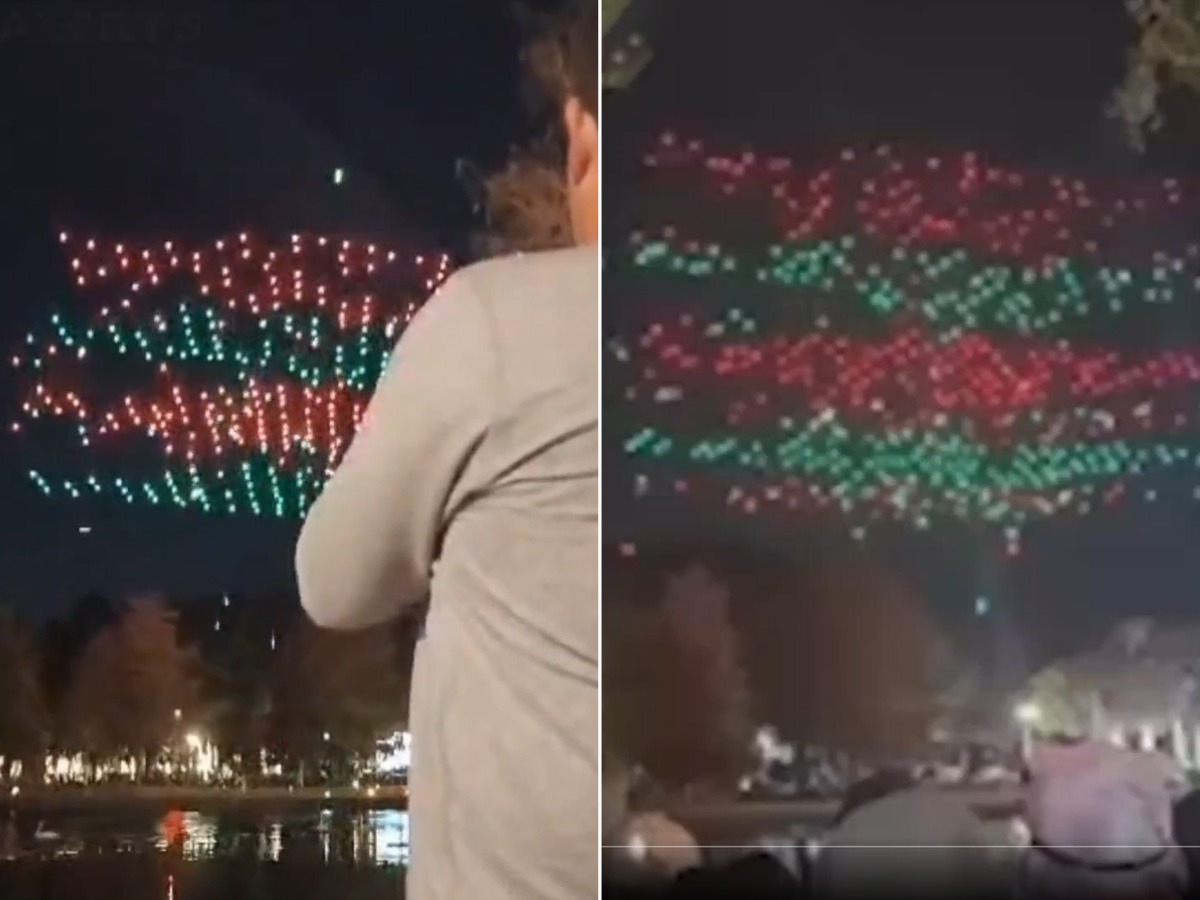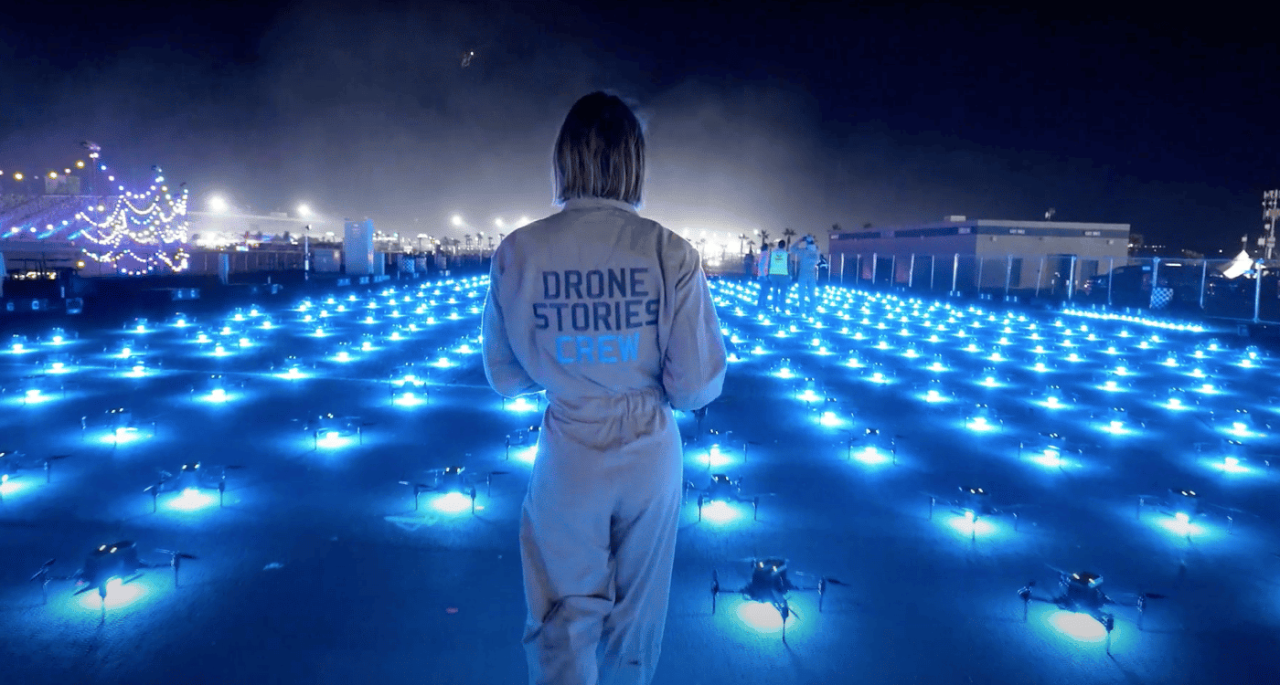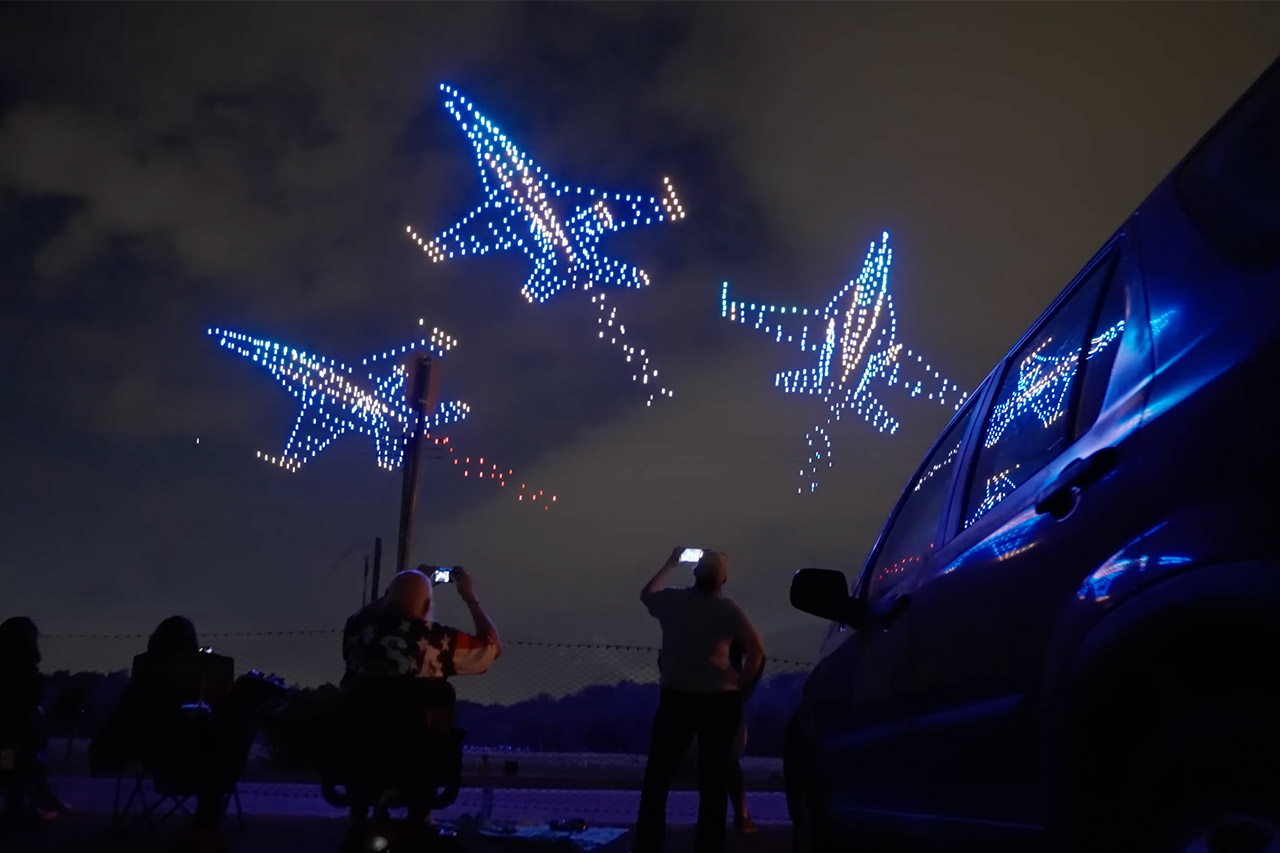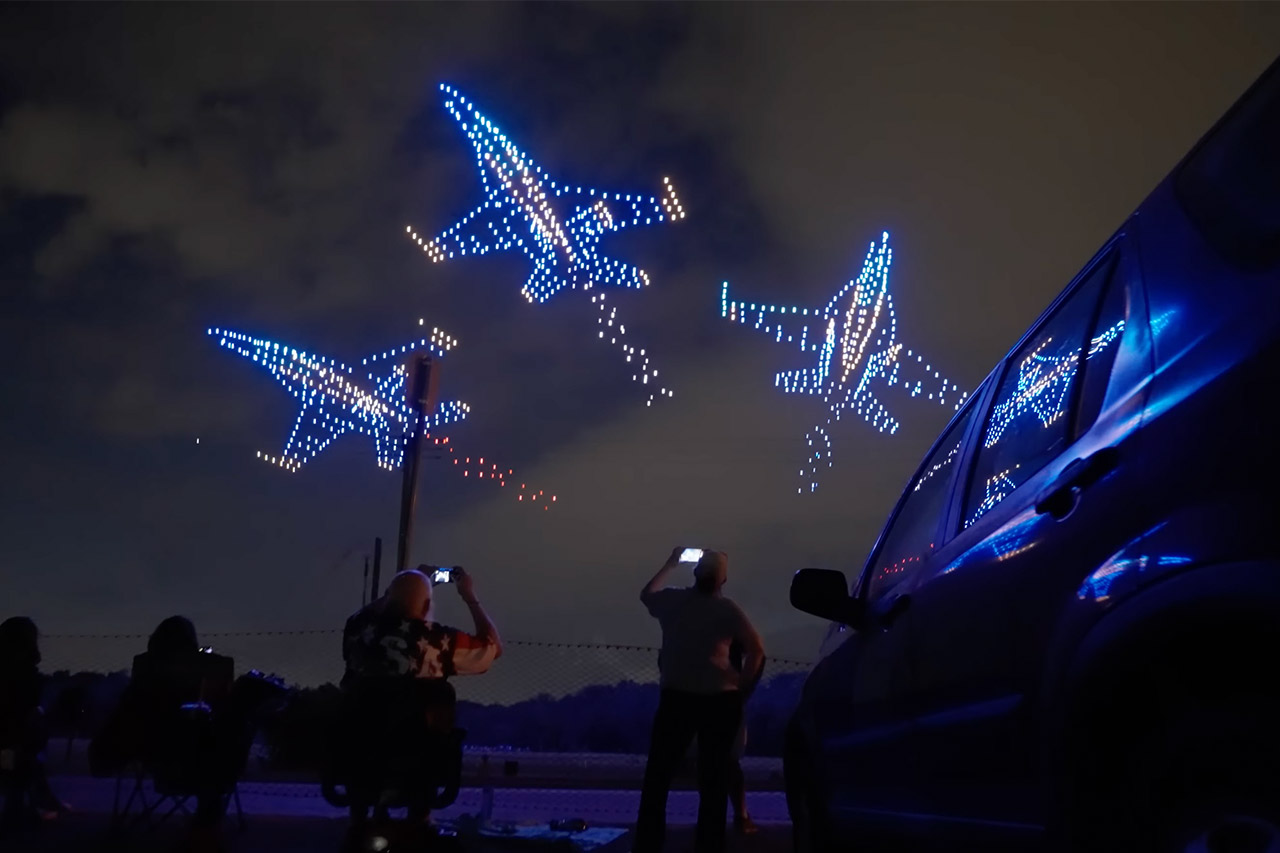Florida Drone Show: Imagine breathtaking aerial displays illuminating Florida’s iconic landscapes. From dazzling choreographed light shows to mesmerizing formations against vibrant sunsets, drone shows are transforming entertainment and tourism across the Sunshine State. This guide delves into the regulatory framework, popular locations, diverse show types, economic impact, safety protocols, and technological advancements shaping this exciting industry.
We’ll explore the intricacies of obtaining permits, navigating airspace restrictions, and understanding the unique logistical challenges presented by Florida’s diverse environments. We will also examine the creative artistry behind these spectacles, the economic benefits they generate, and the future of technological innovation within the Florida drone show landscape.
Florida Drone Show Regulations and Permits

Operating drone shows in Florida requires navigating a complex web of regulations and obtaining the necessary permits. Understanding these requirements is crucial for ensuring legal compliance and the successful execution of any drone display.
FAA Regulations Governing Drone Shows in Florida
The Federal Aviation Administration (FAA) sets the primary regulations for drone operation nationwide, including Florida. These regulations cover aspects such as drone registration, pilot certification, airspace restrictions, and operational limitations. Specifically, Part 107 of the FAA regulations governs the commercial operation of drones, which includes drone shows. Organizers must ensure their operations comply with all relevant sections of Part 107, including limitations on flight altitude, visual line-of-sight requirements, and operational limitations near airports and other sensitive areas.
Permit Application Process for Florida Drone Shows
The permit application process varies depending on the location of the drone show. For shows in public spaces like beaches or parks, permits are typically required from the managing local government agency (city or county). Private land owners may have their own permitting processes. Applications generally require detailed flight plans, safety protocols, insurance information, and contact details.
It’s advisable to begin the permitting process well in advance of the planned event.
Florida drone shows are becoming increasingly popular, offering spectacular nighttime displays. These impressive shows often utilize advanced drone technology, such as that provided by companies like sky elements drones , known for their reliable and high-performance systems. The precise choreography and vibrant visuals make for a truly unforgettable Florida experience.
Comparison of Permit Requirements Across Florida Counties

Permit requirements can differ significantly across Florida counties. Some counties may have more stringent regulations than others, particularly regarding airspace restrictions near airports or sensitive ecological areas. Fees and processing times also vary. It is essential to contact the relevant county’s aviation or parks and recreation department to obtain the specific requirements for the intended location.
Summary of Key Permit Requirements

| County | Fee | Processing Time | Additional Requirements |
|---|---|---|---|
| Example County 1 | $500 – $1000 (Variable based on show size) | 4-6 weeks | Detailed flight plan, liability insurance, security plan |
| Example County 2 | $250 – $750 (Variable based on show duration) | 2-4 weeks | Noise level assessment, environmental impact statement (if applicable) |
| Example County 3 | $100 – $500 (Variable based on number of drones) | 1-3 weeks | LAANC authorization, proof of drone registration |
Popular Florida Drone Show Locations
Several locations in Florida offer unique settings for spectacular drone shows. The selection of a location depends on factors such as accessibility, airspace considerations, and the desired ambiance of the show.
- Location 1: Cocoa Beach Pier (28.22° N, 80.61° W): Offers stunning ocean views and a vibrant atmosphere. Logistical challenges may include weather variability and potential airspace restrictions near the nearby airport.
- Location 2: St. Augustine Historic District (29.85° N, 81.31° W): The historical backdrop provides a unique and picturesque setting. Challenges include navigating airspace around historical buildings and managing crowds in a densely populated area.
- Location 3: Everglades National Park (25.30° N, 80.93° W): Offers a vast and dramatic landscape. However, permits and coordination with park authorities are crucial, and weather conditions can be unpredictable.
- Location 4: Clearwater Beach (27.97° N, 82.83° W): Known for its beautiful beaches and clear skies. Logistical considerations include coordinating with beach authorities and managing large crowds.
- Location 5: Walt Disney World Resort (28.37° N, 81.57° W): While privately owned, this location has the potential for large-scale shows with existing infrastructure. However, permits and coordination with Disney would be essential.
Types of Drone Shows in Florida
Drone shows in Florida exhibit a variety of styles, catering to diverse audiences and events. The creativity and technological complexity vary depending on the type of show.
Examples of Different Drone Show Types
Florida hosts themed shows celebrating local events or holidays (e.g., a Fourth of July fireworks alternative), corporate events showcasing brands or products, and artistic performances with synchronized music and choreography. These shows differ in their narrative, visual effects, and technical demands.
Creative Aspects and Technological Requirements
Themed shows often incorporate storytelling elements and visual metaphors related to the theme, while corporate events focus on brand visibility and messaging. Artistic performances prioritize aesthetic beauty and emotional impact through complex choreography and music synchronization. Technological requirements range from simple pre-programmed flight patterns to sophisticated AI-driven autonomous flight control systems with advanced lighting effects.
Visual Comparison of Drone Show Types
Economic Impact of Drone Shows in Florida
Drone shows contribute significantly to Florida’s economy, particularly in the tourism and hospitality sectors. The influx of visitors attending these events boosts local businesses, creating employment opportunities and generating revenue.
Economic Benefits and Successful Event Examples
Successful drone shows attract significant tourism, filling hotels, restaurants, and other businesses. For example, a large-scale drone show held in a coastal city could generate millions of dollars in revenue, benefiting local hotels, restaurants, and transportation services. The positive media coverage surrounding such events also enhances the destination’s image and attracts future tourism.
Job Creation Potential
The drone show industry creates jobs in various sectors, including drone piloting, software development, event management, and tourism-related services. The growth of this industry presents opportunities for skilled professionals and entrepreneurs in Florida.
Estimated Economic Impact of a Large-Scale Drone Show
| Economic Sector | Estimated Revenue | Job Creation |
|---|---|---|
| Tourism | $5 million | 200 temporary jobs |
| Hospitality | $2 million | 100 temporary jobs |
| Local Businesses | $1 million | 50 temporary jobs |
Safety and Security Aspects of Florida Drone Shows
Safety and security are paramount in organizing a successful drone show. Comprehensive protocols are necessary to mitigate risks and ensure the well-being of spectators and participants.
Safety Protocols and Emergency Response
Safety protocols include pre-flight inspections, meticulous flight planning, redundant systems for drone control, and trained personnel for handling emergencies. Emergency response teams, including medical personnel and security personnel, are crucial for handling unforeseen circumstances. Contingency plans for various scenarios (e.g., drone malfunction, adverse weather conditions) should be developed and rehearsed.
Risk Mitigation Measures
Measures to mitigate risks include using multiple drones with backup systems, employing fail-safe mechanisms, establishing clear emergency communication channels, and having a designated safety officer overseeing the entire operation. Spectator safety is ensured through designated viewing areas, crowd control measures, and clear communication about safety procedures.
Safety Guidelines for Organizers and Attendees
- Organizers: Obtain necessary permits, conduct thorough risk assessments, implement comprehensive safety protocols, and have adequate insurance coverage.
- Attendees: Follow instructions from event staff, maintain a safe distance from the flight area, and be aware of potential hazards.
Technological Advancements in Florida Drone Shows

Technological advancements continuously improve the quality, safety, and complexity of drone shows in Florida. New technologies enhance the visual appeal and efficiency of these displays.
Florida drone shows are becoming increasingly popular, offering spectacular nighttime displays. However, the recent incident highlighted in this report on an orlando drone show malfunction serves as a reminder of the potential technical challenges involved. Understanding these challenges is crucial for ensuring the safety and success of future Florida drone shows, prompting a review of safety protocols and technological safeguards.
Latest Technologies in Drone Shows
Recent technological improvements include advanced drone lighting systems with RGB LEDs, precise GPS tracking and autonomous flight control systems, and sophisticated software for creating intricate choreography. The use of AI-powered systems allows for more complex and dynamic displays, while improved battery technology extends flight times.
Role of Software and Programming
Software plays a vital role in creating complex and visually stunning drone choreography. Specialized software allows programmers to design intricate flight paths, synchronize drone movements with music, and incorporate various lighting effects. This software also facilitates the simulation and testing of choreography before the actual show.
Comparison of Drone Capabilities
Different types of drones are used depending on the specific requirements of the show. Larger drones may be used for carrying heavier lighting systems or creating larger formations, while smaller drones offer greater maneuverability for intricate choreography. The choice of drone depends on factors such as payload capacity, flight time, and maneuverability.
Technological Improvements Over Time
The evolution of drone technology has significantly improved the safety and quality of drone shows. Early shows were limited in their complexity and relied on manual control, whereas modern shows utilize autonomous flight systems, advanced lighting, and sophisticated software for creating breathtaking displays. This has led to more complex and visually stunning shows while also increasing safety and reducing risks.
Florida drone shows represent a captivating blend of technology, artistry, and entertainment, offering a unique and increasingly popular form of spectacle. By understanding the regulatory landscape, logistical considerations, and safety protocols, organizers can contribute to the continued growth and success of this dynamic industry, while ensuring both spectacular displays and public safety. The future of Florida drone shows promises even more innovative displays and wider accessibility, solidifying their place as a key component of Florida’s vibrant tourism and entertainment scene.
Common Queries
What is the typical cost of a drone show permit in Florida?
Florida drone shows are becoming increasingly popular, offering spectacular nighttime displays. However, the potential for incidents exists, as highlighted by a recent drone show accident which underscores the importance of rigorous safety protocols. Therefore, ensuring meticulous planning and adherence to regulations is crucial for maintaining the safety and enjoyment of future Florida drone shows.
Permit costs vary significantly depending on location, show size, and duration. Expect fees ranging from several hundred to several thousand dollars.
How much airspace is typically needed for a drone show?
The required airspace depends on the number of drones and the complexity of the choreography. Organizers need to coordinate with the FAA and local authorities to establish safe airspace boundaries.
What are the insurance requirements for Florida drone shows?
Comprehensive liability insurance is essential to cover potential damages or injuries. Specific coverage amounts will depend on the scale of the event.
What type of drones are commonly used in Florida drone shows?
High-luminosity, GPS-enabled drones with reliable autonomous flight capabilities are typically preferred for large-scale shows. The specific model depends on budget and desired effects.
